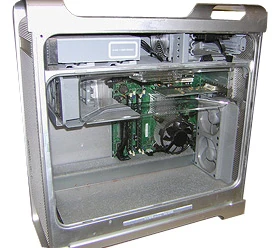 During the 16th annual conference hosted by Apple at the Moscone Center in San Francisco, Apple announced the transition to the Intel platform as well as the release of a developer transition kit (DTK). These were the first-ever released Intel computers by Apple, although the commercial debut for the first Intel Mac is at least 6-7 months out from the time this came out.
During the 16th annual conference hosted by Apple at the Moscone Center in San Francisco, Apple announced the transition to the Intel platform as well as the release of a developer transition kit (DTK). These were the first-ever released Intel computers by Apple, although the commercial debut for the first Intel Mac is at least 6-7 months out from the time this came out.
The original Apple Developer Transition Kit was released in Mid-2005. It housed a handful of standard-looking components mashed with some G5 parts, all inside the case of a carefully-modified Power Mac G5. It ran off of a 3.6 Ghz Pentium 4 CPU, had a ton of empty room inside, shipped with an Intel-only build Mac OS X 10.4.1 Tiger, and was only available as a loaned computer with a down payment.
Editor’s Note: All photos of the Apple DTK in this article are credited to Dandu from MacRumors.
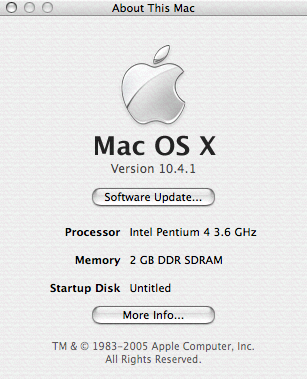
As Steve Jobs said on WWDC: “This is a development platform only. This is not a product; this will never be shipped as a product. It’s just for you guys to get started in development. You actually have to return them by the end of 2006. We don’t want them floating around out there. These are not products.”
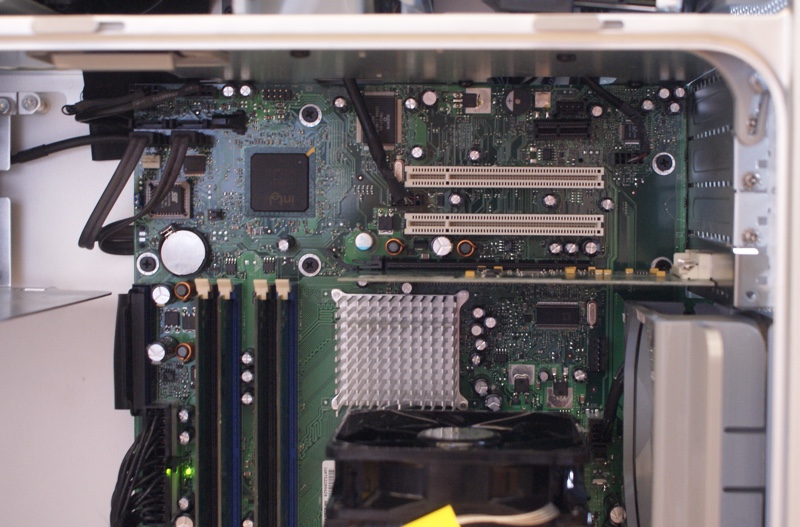
(Credit: Dandu from MacRumors)
The deadline to return these machines was on the week of December 31st, 2006 as apple didn’t want these circulating out in the open. You had to be a “Select” or “Premier” ADC (Apple Developer Connect) member, memberships started at $499/yr and you had to fork over $999 to be given the privilege of having the DTK in your possession temporarily.

Rear Ports
Since the case and logic board don’t entirely match up, it was necessary to plug holes (ports). If you see a Power Mac G5 that looks like this, it’s almost certainly a DTK.
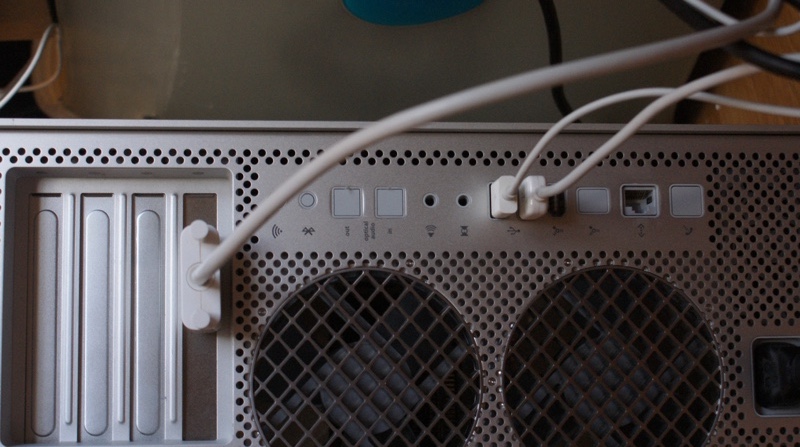
(Credit: Dandu from MacRumors)

Did You Know?
With the release of this DTK, many tools/images were leaked online and ultimately this Mac is what sparked the Hackintosh community.
Quirks and Features
- Instead of Intel Model numbers, the logic board has “Barracuda” printed on it.
- A backplate is installed to fit the custom logic board (MicroATX standard)
- Has an ATX PSU (24-pin and 4-pin connectors) Apple part number 920-0267-03
- Has a x16 PCIe, a x1 PCIe slot, and 2x older style PCI slots.
- Uses Master Boot Record to boot instead of EFI/GPT used on Intel Macs
- Uses an Infineon TPM to boot OS X. Rosetta checks for this otherwise it won’t start on a hackintosh.
![]()
(Above: This is the kind of adapter used for the display)
Details
- Announced June 6th, 2005
- Apple model number: Axxxx
- Model ID: ADP2,1
- MA022xx/A
- Discontinued on December 31st, 2006
How it stacks up in Xbench
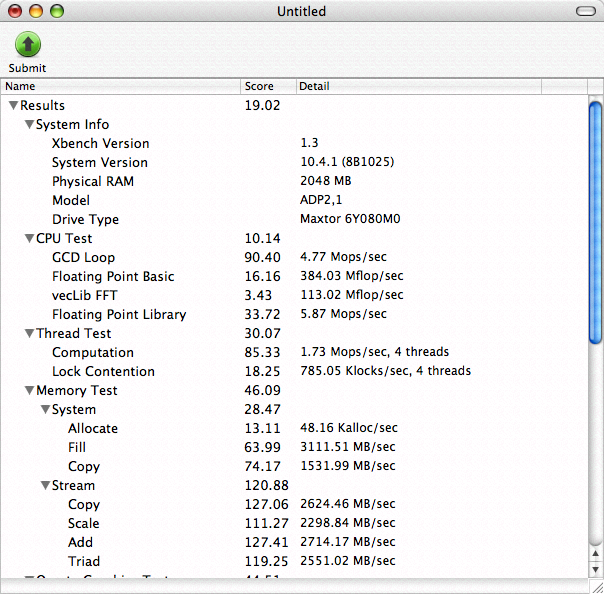 (Credit: Dandu from MacRumors)
(Credit: Dandu from MacRumors)
Unsupported Mac OS X
- You cannot upgrade this officially beyond developer builds of Mac OS X tiger, although you can install Windows on here as if it were just a regular PC.
Mac OS X
- Requires Mac OS X 10.4.1 Tiger (Build 8B1025) through 10.4.3 (Build 8F1111A)
Core System
- Intel Pentium 4-660 ($999): 3.6 GHz, 1 CPU, 1 Core, 2 Threads, 64-Bit Arch
115W TDP, VID 1.2 – 1.4, 169M Transistors, 90nm, Intel Prescott, 800 MHz FSB
. - Northbridge: Intel 915G with Intel GMA 900 Graphics Chip
. - Southbridge: Intel ICH6 82801FB
. - Motherboard: Intel Desktop Board D915GUXLK
Video
- Intel GMA 900 Graphics Chip, Silicon Image ORION ADD2-N PCI Express adapter
- DVI-D output
Memory
- 1 GB PC2-5300 667 MHz ECC DDR2 SDRAM
Drives
- 160 GB 7200 rpm Serial-ATA 1.0 (1.5 Gb/s) Rotational Hard Disk Drive
- SuperDrive (4x DVD, 2x DVD-R)
Expansion/Misc
- 1x RJ-45 style Ethernet (Cat 6) connector
- 1x Firewire 400 Port
- 2x USB-A style USB 2.0 (480 MB/s) ports
- 1x standard 3-prong IEC 63020 Power connector
Dimensions
- Size (HxWxD): 20.1″ x 8.1″ x 18.7″ (51.1 x 20.6 x 47.5 cm)
See More:
- The Apple Wiki: Developer Transition Kit (2005)
- Macrumors: Apple Development Transition Kit
- Wikipedia: Developer Transition Kit

